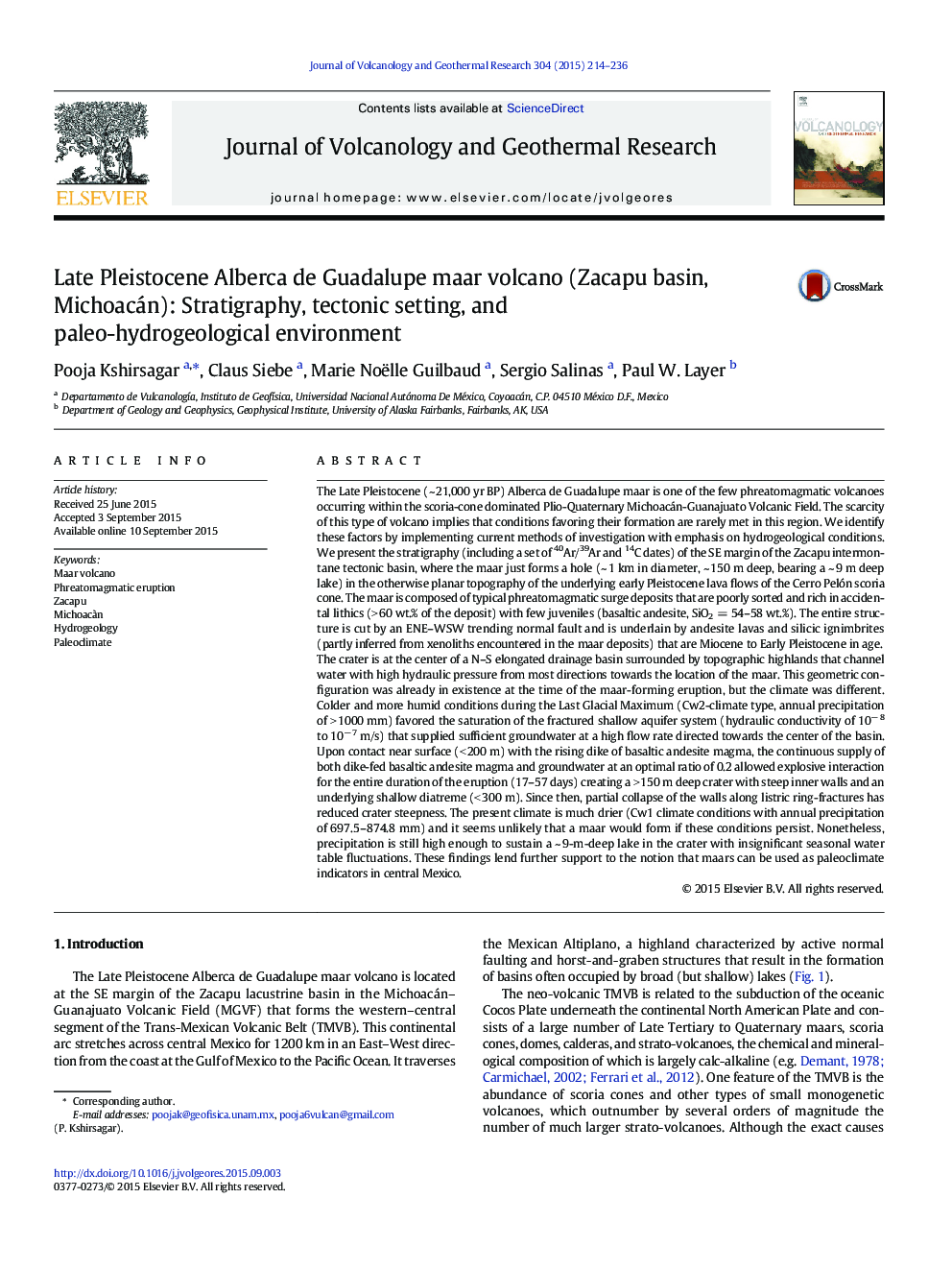| Article ID | Journal | Published Year | Pages | File Type |
|---|---|---|---|---|
| 6439803 | Journal of Volcanology and Geothermal Research | 2015 | 23 Pages |
Abstract
The crater is at the center of a N-S elongated drainage basin surrounded by topographic highlands that channel water with high hydraulic pressure from most directions towards the location of the maar. This geometric configuration was already in existence at the time of the maar-forming eruption, but the climate was different. Colder and more humid conditions during the Last Glacial Maximum (Cw2-climate type, annual precipitation of > 1000 mm) favored the saturation of the fractured shallow aquifer system (hydraulic conductivity of 10â 8 to 10â 7 m/s) that supplied sufficient groundwater at a high flow rate directed towards the center of the basin. Upon contact near surface (< 200 m) with the rising dike of basaltic andesite magma, the continuous supply of both dike-fed basaltic andesite magma and groundwater at an optimal ratio of 0.2 allowed explosive interaction for the entire duration of the eruption (17-57 days) creating a > 150 m deep crater with steep inner walls and an underlying shallow diatreme (< 300 m). Since then, partial collapse of the walls along listric ring-fractures has reduced crater steepness. The present climate is much drier (Cw1 climate conditions with annual precipitation of 697.5-874.8 mm) and it seems unlikely that a maar would form if these conditions persist. Nonetheless, precipitation is still high enough to sustain a ~ 9-m-deep lake in the crater with insignificant seasonal water table fluctuations. These findings lend further support to the notion that maars can be used as paleoclimate indicators in central Mexico.
Related Topics
Physical Sciences and Engineering
Earth and Planetary Sciences
Geochemistry and Petrology
Authors
Pooja Kshirsagar, Claus Siebe, Marie Noëlle Guilbaud, Sergio Salinas, Paul W. Layer,
